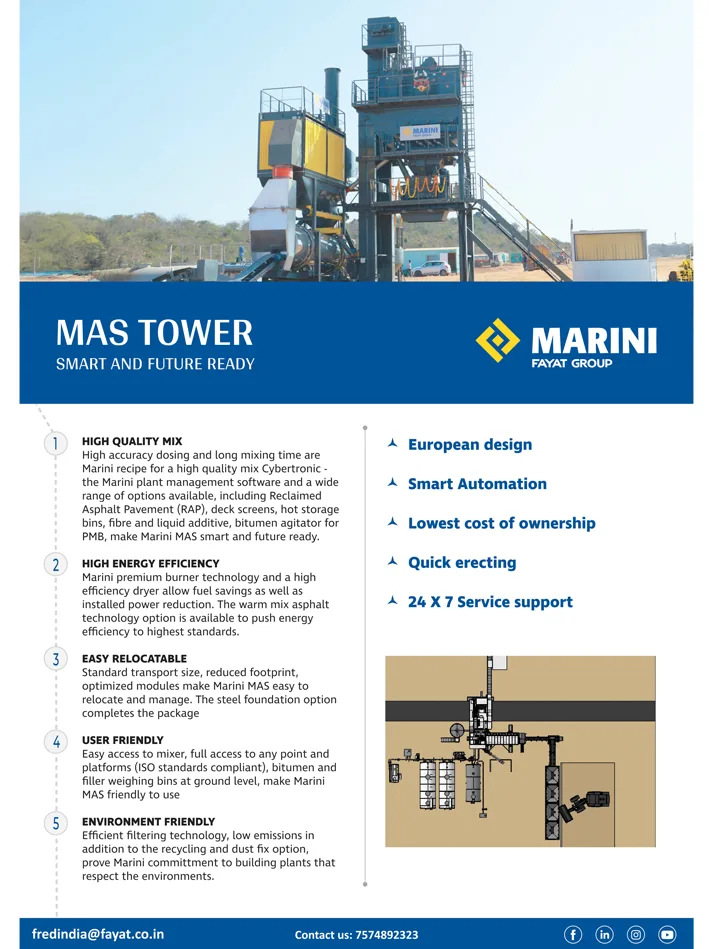PM Modi Launches Rs.48,520 Cr Projects in Bihar
Prime Minister Narendra Modi recently inaugurated and laid the foundation stone for development projects worth over Rs.48,520 crore in Karakat, Bihar, marking a significant push for the state’s infrastructure. This concluded his two-day visit to Bihar, which also included public rallies and a roadshow.
Enhancing Connectivity: Roads and Railways
A major focus of the projects is on road infrastructure. The Prime Minister laid the foundation stone for the four-laning of the Patna-Arrah-Sasaram section of National Highway 119A and the six-laning of the Varanasi-Ranchi-Kolkata highway, National Highway 319B. To further enhance regional connectivity and facilitate trade, a new Ganga bridge between Buxar and Bharauli was also announced.
In the rail sector, PM Modi dedicated the third rail line between Son Nagar and Mohammad Ganj, a project completed at a cost exceeding Rs.1,330 crore.
Powering the Future: Nabinagar Thermal Project
Boosting the region’s energy security, the Prime Minister laid the foundation stone for the Nabinagar Super Thermal Power Project, Stage-II (3×800 MW) in Bihar’s Aurangabad district. Valued at over Rs.29,930 crore.
This project aims to ensure energy security for Bihar and the wider eastern India region. According to an official communication, this massive power initiative will support industrial growth, generate employment, and increase electricity availability across the region.
Upgrading Aviation Infrastructure
The Prime Minister inaugurated a new terminal building at the Patna Airport, constructed at a cost of Rs.1,200 crore. He also laid the foundation stone for a civil enclave at Bihta airport, which is expected to be developed for Rs.1,410 crore, significantly upgrading air connectivity in the state.
UP Govt Allots Rs.700 Crore for Smart City Development in Seven Cities.
The Uttar Pradesh government has approved an additional Rs.700 crore allocation to enhance urban services in seven of its cities under the ongoing Smart City mission goals. This significant financial injection aims to further upgrade infrastructure and amenities in these key urban centers.
Under this latest approval, the cities of Ayodhya, Gorakhpur, Mathura, Shahjahanpur, Meerut, Ghaziabad, and Firozabad will each receive Rs.100 crore. This funding is supplementary to the initial State Smart City scheme, which previously provided Rs.50 crore annually to each of these seven cities from 2019 to 2024, totaling Rs.1,750 crore over five years.
The initial funds were utilized for a wide array of urban improvements, including the development of better roads, modern parking complexes, smart classrooms, solar-powered streetlights, specialized senior care centers, open gymnasiums, and health ATMs, among other essential facilities.
However, recognizing the evolving expectations of the urban population, state authorities identified the need for further upgrades, particularly in areas such as integrated traffic management systems, the creation of green zones, and enhanced educational and healthcare amenities.
In response to requests from the municipal corporations overseeing these seven cities for additional funds to develop these new facilities, the state government decided in March to extend the State Smart City scheme until March 31, 2027.
“The corporations have been asked to submit a detailed action plan on the projects they are going to execute during the 2025-26 and 2026-27 financial years through the additional Rs.100 crore that is going to be doled out to each one of them,” stated a senior government officer.
Amrit Abhijat, Principal Secretary of the department, confirmed that the evaluation of these action plans is currently underway. Funds will be released in tranches to the municipal corporations that successfully meet the stipulated deadlines for project implementation.
This new allocation underscores Uttar Pradesh’s commitment to transforming its urban landscapes and improving the quality of life for its residents.
GMRL Initiates Ground Study for Gurugram Metro’s Phase 2 Expansion.
As Gurugram eagerly anticipates the commencement of construction for its first new metro corridor phase, the Gurugram Metro Rail Limited (GMRL) has already initiated preparatory work for the project’s second phase. Currently, Gurugram’s metro network consists of a mere 17 kilometers, comprising 5.3 kilometers of Delhi Metro’s Yellow Line and 11.7 kilometers of Rapid Metro.
Phase 2 of the metro corridor is designed to significantly enhance connectivity across Gurugram. It will link densely populated areas of old Gurugram, including Sectors 7, 4, 5, 3, Ashok Vihar, Bajghera Road, Palam Vihar Extension, Palam Vihar, Sector 23A, and Sector 22, with the bustling commercial and industrial hubs of Udyog Vihar and DLF Cyber City. This expansion will also provide improved access to the city’s railway station.
To advance the second phase, GMRL has invited bids for a geotechnical investigation along a 16-kilometer stretch, extending from Sector 9 to Cyber City. This crucial survey will also encompass a spur connecting to the Gurgaon railway station and the site of the proposed metro depot. Initially, GMRL had planned for the contracting agency to conduct this survey, but a revised decision now sees the agency undertaking the investigation proactively.
GMRL officials have confirmed that the geotechnical survey will commence once the tender process is finalized. The entire assessment is anticipated to be completed within two months from the start of fieldwork, providing vital data for the subsequent construction phases.
In a related development, Haryana Mass Rapid Transport Corporation Limited, the overseeing body for metro projects in the state, is independently planning an additional 17-kilometer metro line.
This proposed corridor, extending from Bhondsi to the Gurgaon railway station, aims to alleviate traffic congestion on Sohna Road and NH8. Its route will include key points such as Vatika Chowk, Subhash Chowk, Rajiv Chowk, Sohna Chowk, Sector 4-7 Chowk, and Railway Road.
Gujarat’s Urban Transformation: 225 New Town Planning Schemes, Rs.11,056 Crore in Smart City Projects.
As Gujarat observes 2025 as its ‘Urban Development Year,’ the state government recently highlighted significant strides in urban planning and infrastructure, including the approval of 225 Town Planning (TP) schemes in the past three years. Additionally, 348 projects worth Rs.11,056 crore have been successfully completed across six cities under the Union Government’s Smart Cities Mission.
According to a government release, the approval of 225 town planning schemes underscores a rapid advancement in urbanization throughout Gujarat. “Essential urban infrastructure, including roads, street lighting, and drinking water pipelines, were developed in all cities. Special focus on providing housing for economically and socially disadvantaged groups in urban areas,” the statement noted.
Under the Smart Cities Mission, Ahmedabad, Surat, Vadodara, Rajkot, Gandhinagar, and Dahod were selected for development. Out of 354 initiated projects worth Rs.11,451 crore in these cities, a substantial 348 projects, valued at Rs.11,056 crore, have been completed. The remaining six projects, worth Rs.395 crore, are reportedly in their final stages of completion.
In a move to further enhance urban planning and governance, the government also announced the upgradation of nine municipalities to the status of municipal corporations.
The state’s urban local bodies are currently responsible for maintaining an extensive network of 28,618 kilometers of roads. A significant infrastructure highlight from last year was the inauguration of the Sudarshan Setu in February, a signature bridge connecting Dwarka and Beyt Dwarka, built at a cost of Rs.979 crore. The government further added that several major road projects are currently underway, which are expected to significantly enhance connectivity between Gujarat and other states.
Ayodhya Gets Rs.900 Crore Bharat Path Project.
The Uttar Pradesh government has announced plans for a significant new infrastructure project in Ayodhya: the construction of a spiritual corridor named ‘Bharat Path’. This 20-kilometer road will connect Bharatkund, a sacred site where Lord Ram’s brother Bharat is believed to have performed penance, directly to the Ram Temple. The project is estimated to cost Rs.900 crore, the government stated on Wednesday.
Chief Minister Yogi Adityanath proposed the “Bharat Path” with the aim of further elevating Ayodhya’s stature as a global religious and cultural hub. The Public Works Department (PWD) has already submitted the detailed proposal for approval. This new route is expected to offer devotees improved access and a deeper spiritual experience, reinforcing Ayodhya’s central role in India’s religious landscape. Following the inauguration of the Ram Temple, Ayodhya has witnessed an unprecedented surge in visitors, with lakhs of devotees arriving daily from across India and abroad. To manage this growing influx and ensure smooth traffic flow, the government is undertaking multiple infrastructure projects, including the construction and widening of key routes such as Ram Path, Bhakti Path, Janmabhoomi Path, and now Bharat Path. Work is also underway to widen the Panchkosi and Chaudashkosi Parikrama routes.
The Bharat Path will stretch approximately 20 km, starting from the Ranopali railway crossing along Ram Path and extending to Bharatkund via Vidyakund and Darshannagar on the Prayagraj highway. Currently a two-lane road, the plan calls for widening it to include 9-meter lanes on both sides and a 2.5-meter central divider. This design is intended to ensure smooth, safe, and well-organized traffic management. The government emphasized that Bharat Path will be developed with the same grandeur and devotion as Ram Path, promising a spiritually enriching experience for devotees.
Bharatkund holds immense significance in the Ramayana, believed to be the place where Bharat performed penance during Lord Ram’s exile. Upon Ram’s return, Bharat also conducted the Pind Daan ceremony for their father, King Dasharatha, at this sacred site, which is also home to a mythological lake. The construction of Bharat Path is expected to provide devotees with significantly easier access, making their spiritual journey to Ayodhya more convenient.
PWD officials confirmed that work will commence as soon as the proposal receives approval from the headquarters. S.P. Bharti, Executive Engineer of the PWD’s provincial section, stated, “The detailed project report for Bharat Path has been submitted to the headquarters. The estimated cost of the project is Rs.900 crore. Work will commence as soon as approval is granted. Floodlights will be installed along the route to ensure proper illumination.”
Uttar Pradesh Allots Rs.6,124 Crore for New Ring Roads, Bypasses.
The Uttar Pradesh government recently announced a substantial investment of Rs.6,124 crore for the construction of new ring roads, bypasses, and flyovers across the state. This initiative aims to significantly enhance road connectivity and alleviate traffic congestion.
The Public Works Department (PWD) has already developed a comprehensive blueprint for this expansion, outlining 62 projects to be undertaken in the financial year 2025-26. According to the PWD, priority will be given to areas experiencing high population density and heavy vehicular movement, ensuring that the new infrastructure addresses critical traffic bottlenecks. This strategic investment is expected to streamline transportation, improve commute times, and foster economic development in the targeted regions.
PM Modi unveiled Rs.77,000 Crore Development Projects in Gujarat.
Prime Minister Narendra Modi launched development projects totaling over Rs.77,400 crore in Gujarat during a two-day visit to his home state. The Prime Minister’s itinerary included significant infrastructure and urban development initiatives. He inaugurated an electric locomotive manufacturing plant in Dahod and flag off a new electric locomotive from the facility. This plant is poised to produce 9,000 HP electric locomotives for both domestic use and export, featuring regenerative braking systems designed to reduce energy consumption. Following this, Modi will travel to Bhuj, where he will launch multiple development projects worth over Rs.53,400 crore and address public gatherings at both locations.
The Prime Minister attended an event in Gandhinagar celebrating 20 years of the Gujarat Urban Growth Story and officially launched Urban Development Year 2025.
The projects to be launched in Bhuj are focused on enhancing the region’s energy infrastructure. These include critical transmission projects for evacuating renewable power generated in the Khavda Renewable Energy Park, further expansion of the existing transmission network, and the inauguration of an ultra-supercritical thermal power plant unit at Tapi.
In the transportation sector, Modi flagged off the Vande Bharat Express service between Veraval and Ahmedabad, and a new express train connecting Valsad and Dahod. Additionally, he will inaugurate the gauge-converted Katosan-Kalol section and flag off a freight train on the newly converted line, improving logistical capabilities.
Southern Railway to Complete Development Work at All Thiruvananthapuram Stations.
Southern Railway is set to complete a series of development projects at railway stations across the state capital region in the coming months. These initiatives aim to significantly enhance passenger amenities, improve connectivity, and streamline operations, with a particular focus on developing Thiruvananthapuram North as a crucial terminal.
Key among the upcoming works is the transformation of Thiruvananthapuram North station. Plans include the construction of a new station building, installation of tactile paving for accessibility, and the addition of new lifts and platform shelters. Officials on Sunday stated that the tactile paving, new building, two lifts, and platform shelters are expected to be ready by the end of next month. In the past three years, this station has already seen platforms raised, a water recycling plant installed, and platform shelters completed in six bays.
Further bolstering the region’s rail infrastructure, the redevelopment of Neyyattinkara railway station is targeted for completion by August this year. Meanwhile, the comprehensive redevelopment of the major hub, Thiruvananthapuram Central, which involves constructing new station facilities and a passenger concourse, is on track to be finished within two years.
Other stations have also seen recent upgrades. Platforms have been extended at Kazhakkoottam railway station, where ten-seat steel benches and the surfacing of platform number 3 were completed in the last couple of years. Improvements have also been made at Pettah railway station.
Sources within the railway indicate that the increased investment in Thiruvananthapuram North is strategic. It is aimed at facilitating the operation of a higher number of trains from this location to alleviate congestion at the busy Central station. Interstate special trains are already operating from Thiruvananthapuram North to various destinations, including Chennai, and more trains are expected to be routed through this station once the ongoing development works are completed.
Southern Railway’s broader plan for the region includes improving stations at Kazhakkoottam, Thiruvananthapuram North, Pettah, Thiruvananthapuram Central, Balaramapuram, Neyyattinkara, Amaravila, Dhanuvachapuram, and Parassala. Balaramapuram station holds additional strategic importance as it is designated as the connection point for the railway line from Vizhinjam.
Agra Metro: First Pier Cap Installed on Second Corridor as Construction Advances.
The construction of the second corridor of the Agra Metro project achieved a significant milestone with the successful placement of the first pier cap at Agra Cantt. The Uttar Pradesh Metro Rail Corporation (UPMRC) carried out the installation recently. This under-construction section is set to connect Agra Cantt and Kalindi Vihar. The second corridor spans approximately 16 kilometers and will be entirely elevated, featuring 14 stations, all of which are currently in various stages of construction. The UPMRC anticipates completing this corridor by mid-2026.
The pier caps, crucial components for the elevated structure, are being manufactured using precast technology at a casting yard located in Dauki. Each pier cap weighs 65 tons and has dimensions of 9.6 meters in length, 2.9 meters in width, and 1.8 meters in depth. Their precise placement requires the use of a 400-ton crane, according to a statement.
The event at Agra Cantt was attended by Project Director Arvind Rai, other senior officials from UPMRC, and representatives from Larsen & Toubro (L&T), the construction partner for the project.
Meanwhile, significant progress has also been made on the Agra Metro’s first corridor, which runs for 14 kilometers between Taj East Gate and Sikandra. This corridor includes 13 stations, with six being elevated and seven underground. A 6-kilometer priority section of this corridor, connecting Taj Mahal East Gate to Mankameshwar Temple and covering major heritage sites like the Taj Mahal and Agra Fort, is already operational. Trial runs have been completed on the four underground stations along the first corridor, with full commercial operations for the entire first corridor expected to begin by December 2025.
Delhi Sanctions Rs.600 Crore for Road Development Along Najafgarh Drain to Boost Connectivity.
The Delhi government has planned a comprehensive road development project valued at Rs.600 crore to significantly improve connectivity and revitalize the area along the Najafgarh Drain, also known as the Sahibi river. Officials have confirmed the ambitious undertaking. The project encompasses the construction of nearly 60.77 kilometers of new roads along the drain’s stretch. The plan includes building a two-lane road spanning 5.94 kilometers on the left bank, connecting Jhatikra Bridge to Chhawla Bridge. Additionally, a two-lane road will be constructed on both banks of the drain between Chhawla Bridge and Basaidarapur Bridge, adding another 54.83 kilometers to the new corridor.
These new roads are designed to seamlessly integrate with Delhi’s existing major road network, providing crucial links to the Inner Ring Road at Basai Darapur, the Outer Ring Road at Keshavpur, Pankha Road at Vikaspuri, Najafgarh Road at Kakrola, the Dwarka Expressway, and several important routes leading to the airport.
Delhi’s Irrigation and Flood Control Minister, Parvesh Verma, commented on the project’s impact, stating, “This will not only improve connectivity in the region but also contribute to the city’s larger goal of making public spaces more accessible and environmentally friendly.” He added that work on the project is slated to begin soon.
The scope of work extends beyond just road construction and will include the development of essential road infrastructure, the erection of boundary walls, installation of street furniture, electrical work, construction of public toilets, implementation of signage, and the development of side greenery. The overarching vision, according to the Minister, is to establish a green corridor along the entire stretch.
The proposed development is expected to bring particular benefit to residents in nearby areas, including Punjabi Bagh, Paschim Vihar, Nilothi, Baprola, Kakrola, Najafgarh, Dwarka, Vikaspuri, and Chhawla.
Port-Maduravoyal Corridor Work: Encroachments Removed on Cooum Banks.
Authorities recently began demolishing over 20 buildings that had encroached upon the banks of the Cooum River in Arumbakkam. The action is aimed at clearing the path for the 20.9-kilometer-long elevated Port-Maduravoyal corridor, a crucial infrastructure project for the city.
The demolition drive was carried out by the state highways department, supported by approximately 100 police personnel, using two earth movers. The razed structures, primarily commercial buildings, had occupied the riverbanks for nearly two decades. Highways officials reported that approximately 200 meters in length and 50 meters in breadth of the riverbank have been reclaimed so far. Officials indicated that more than 50 additional encroachments in the area are yet to be removed, and the demolition process is expected to continue through the weekend.
The Port-Maduravoyal corridor project is being executed by the National Highways Authority of India (NHAI), with the state highways department providing assistance in local enforcement. Officials stated that the cleared areas will be utilized for constructing the pillars of the proposed double-decker elevated corridor. For the remaining sections along the river, NHAI plans to acquire land from private landowners. A significant portion of the 20.9 km corridor, approximately 15.5 km, will be an elevated structure built over the river. Out of a total of 650 pillars planned for the corridor, 525 will be situated within the riverbed.
NHAI has also cordoned off about 10 feet on either side of the Poonamallee High Road stretch between Koyambedu and Maduravoyal to facilitate construction activities for the double-decker structure. Existing pillars constructed in 2009 in this section are likely to be dismantled and replaced with new ones as part of the current project. Piling and foundation work for the corridor are also actively being carried out in downstream areas, including Chetpet, Egmore, and Chindadripet. An MoU for the Port-Maduravoyal corridor project was initially signed in 2022, with the entire project expected to be completed by 2027.
In a related development, the widening of the Pallavaram–Kundrathur–Poonamallee Road, which had faced years of delays, has gained momentum. Authorities recently cleared encroachments in the Karima Nagar area along this route. The demolition of illegally constructed houses that were obstructing traffic flow in the area led to protests from residents, which were subsequently placified by police and revenue officials. This 13.4-kilometer road serves as a vital link between Chennai’s southern and western suburbs, connecting GST Road near Pallavaram to Poonamallee via Kundrathur. The widening is anticipated to significantly ease traffic congestion and improve connectivity for thousands of daily commuters. Kundrathur municipality officials indicated that further eviction drives along this road will be carried out in phases.
Green Push: Maharashtra Govt Signs MoU for Sustainable Logistics Hubs with Rs.5,127 Crore FDI.
In a significant boost to its infrastructure and economy, the Maharashtra government on Wednesday signed a Memorandum of Understanding (MoU) with Horizon Industrial Parks and Xsio Logistics Parks for the development of over ten sustainable industrial and logistics parks across the state. The initiative, reported by Hindustan Times, is expected to attract substantial foreign direct investment (FDI) and create significant employment opportunities.
The planned parks, designed to be fully compliant with sustainability standards, will be strategically located in key industrial and logistical hubs, including Panvel, Bhiwandi, Chakan (Pune), Nagpur, and Sinnar (Nashik). These developments will collectively span a vast area of 794.2 acres, with a projected construction area of 18.5 million square feet. The total foreign direct investment committed for these projects amounts to an impressive Rs.5,127 crore.
This ambitious undertaking aligns with the Maharashtra Logistics Policy 2024 and aims to significantly boost the state’s manufacturing, warehousing, and supply chain ecosystems. The development of these modern logistics parks is expected to generate over 27,000 direct and indirect job opportunities, contributing to economic growth andL employment in the region. The partnership underscores Maharashtra’s commitment to developing world-class, environmentally conscious industrial infrastructure to attract investment and facilitate trade.
CIAL Begins Rs.200 Crore Cial 2.0 Modernization Project.
Cochin International Airport Ltd (CIAL) is set to embark on a major digital overhaul with the launch of “CIAL 2.0,” a comprehensive project valued at Rs.200 crore. The initiative, focused on fully digitizing airport operations and significantly enhancing passenger services through the integration of artificial intelligence, automation, and advanced cybersecurity measures, was inaugurated by Chief Minister Pinarayi Vijayan A cornerstone of the CIAL 2.0 project is the establishment of a state-of-the-art Cyber Defence Operations Centre (CDOC). This facility marks a first for Indian airports, being a full-fledged on-premises server facility. Developed with the support of the Centre for Development of Advanced Computing (CDAC), the CDOC is designed to provide real-time threat intelligence, ensure 24/7 proactive monitoring, and enable rapid response to potential security incidents.
S Suhas, Managing Director of CIAL, emphasized the critical need for such a robust cybersecurity infrastructure in the current landscape. “With increasing cyber threats in the aviation sector, the CDOC employs advanced security tools to detect, neutralise, and pre-empt external threats, including hacking attempts, malware intrusions, and ransomware attacks,” he stated. Suhas added that this “real-time digital shield ensures that Cial’s network and IT backbone remain secure, making it a national benchmark in airport cybersecurity.” Beyond the significant cybersecurity upgrades, CIAL 2.0 also introduces substantial enhancements in passenger handling and terminal safety. The project includes the implementation of full-body scanners that comply with international standards, facilitating contactless and non-intrusive security checks for improved safety and passenger comfort. Security checkpoints will also be equipped with the Automated Tray Retrieval System (ATRS), designed to expedite cabin baggage screening by automating the movement of trays and minimizing manual handling. Furthermore, an advanced AI-driven surveillance system, comprising over 4,000 cameras, has been made operational across high-security zones of the airport. These intelligent systems utilize deep learning capabilities to monitor passenger behavior, detect potential threats in real-time, and ensure swift responses to emergency situations, further bolstering the airport’s security apparatus.
Bridge Project Approved in Chambal Gharial Sanctuary by National Wildlife Board.
The standing committee of the National Board for Wildlife (NBWL) has granted its approval for the construction of a vital bridge on state highway-120 (Indargarh–Lalitpur), a route that traverses the sensitive Chambal Gharial Sanctuary area.
This bridge project is anticipated to significantly benefit over 3 lakh residents across the Indargarh and Lakheri areas of Bundi district, the Khatauli, Pipalda, and Etawa areas of Kota district in Rajasthan, as well as parts of neighbouring Madhya Pradesh by improving connectivity and reducing travel times.
A senior official confirmed that this decision clears the way for the construction of the proposed high-level bridge over the Chambal River and its connecting approach roads. The official noted that the project had been stalled for several years and finally received the necessary clearance after the Lok Sabha Speaker advocated for it and held discussions with the Ministry of Environment.
Administrative approval for the bridge construction, with a sanctioned amount of Rs.256.46 crore, was granted by the public works department in 2023. The bridge is planned at village Gothda Kalan, situated on the Indargarh–Dhibri–Rajopa–Etawa–Shahnawda–Lalitpur state highway-120.
The total proposed length of the project is 4.8 kilometres, which includes a 1,880-metre bridge structure and 2,920 metres of approach roads. Land acquisition for the project is currently in progress, with 14.94 hectares being acquired in Bundi district and 7.233 hectares in Kota district. The official emphasized that because the bridge falls within the protected Chambal Sanctuary area, obtaining approval from the National Board for Wildlife was a mandatory requirement.
The proposal for the bridge construction within the sanctuary was initially submitted in December 2023. It was subsequently forwarded to the National Board for Wildlife following recommendations from the State Wildlife Board. The NBWL granted its clearance during its meeting held on April 22, 2025, subject to necessary environmental conditions to mitigate any potential impact on the sanctuary and its inhabitants, including the critically endangered gharials.













